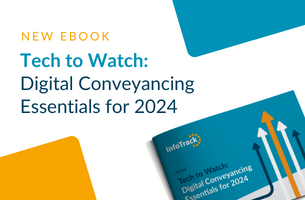
Land Registry: More datasets being released
HM Land Registry (HMLR) has not met its target to reduce the number of requests for information that it has to send to law firms that have submitted incomplete or inaccurate information.
The aim was to issue such requests – called requisitions – in no more than 15% of applications, a target reduced from 20% the previous year.
However, according to HMLR’s annual report for the year to 31 March 2019, it had to issue requisitions in 18.94% of applications.
This amounts to more than 3,000 requisitions a day, a volume the report said was “hindering our ambition to make dealings with us quick and simple and represents an ongoing burden/risk to HM Land Registry and its customers”.
In March, HMLR published how many requisitions it sent to the 500 firms that made the highest volume of applications; one received them in 68% of those it submitted.
Solicitors Regulation Authority research in April found that some 91% of firms acknowledged they had received requisitions that were avoidable, but equally, 60% suggested that the situation was exacerbated by inconsistent decision making by HMLR.
HMLR acknowledges that it sometimes issues requisitions through no fault of the lawyer. The annual report continued: “Some are as simple as spelling a name wrong or incorrect fees. Some are entirely justified. Some we could avoid. Others could be avoided by the legal profession.
“These cost us and our customers unnecessary time and money and they could affect the quality and security of the register.”
HMLR said it put in “a great deal of work” over the year to prepare the market for improvement, but this has “not yet been fully reflected in the overall level of quality of the registration applications we receive”.
It continued: “Internally we have worked to improve our own consistency in the raising of requisitions and thereby improve the data we are sharing with some of our customers. Our caseworkers underwent new training in the course of the year to improve consistency and, while there is more to do, significant improvements have already been made.
“For example, we have reduced the use of non-standard requisitions to virtually zero, meaning our customers are now receiving more consistently worded and clearer feedback when we raise requisitions.
“Externally, we have worked with the customers who lodge the most applications to improve quality, and in some cases requisition rates have fallen.”
HMLR said it has also provided new training and support tools for customers, implemented new policies for rejection in certain types of application, and was trialling new ways of dealing with requisition points that recognise the issues lawyers face in obtaining evidence from third parties.
It added: “We are working with regulators and membership bodies to help improve the quality of applications through the sharing of data and collaborating in joint training and development activities.”
The report said that it would next release datasets “that our users tell us will continue to disrupt and positively impact the property market and the economy more generally”:
- A registered leases dataset, providing details of registered leasehold properties. “There is high demand for this data from search companies, lenders, credit referencing agencies, and estate agents. It has also been singled out by the Ministry of Housing, Communities and Local Government’s research as having the potential to drive innovation in the homebuying process”;
- A daylist dataset, providing a list of applications and searches received daily by HMLR. “Our research suggests this will be of great interest to those in the conveyancing industry who are interested to know the state of progress of transactions”; and
- A restrictive covenants dataset, providing early awareness of their existence, “saving wasted time and resource for homebuyers, conveyancers and developers. The publication of this data will actively reduce the number of failed transactions and can be used to outline patterns of regional issues surrounding land use restrictions”.
Meanwhile, Simon Hayes has been named as the new chief land registrar and chief executive of HMLR, taking over on 11 November.
A Home Office civil servant since 1997, he is currently director of visas & citizenship at UK Visas and Immigration. He replaces Mike Harlow, a solicitor who has held the role in an acting capacity since the start of the year.















Leave a Comment